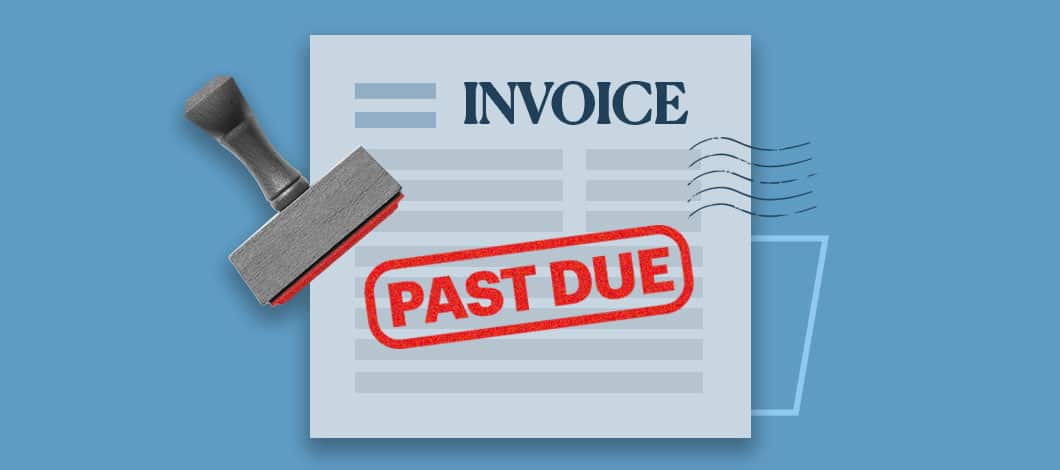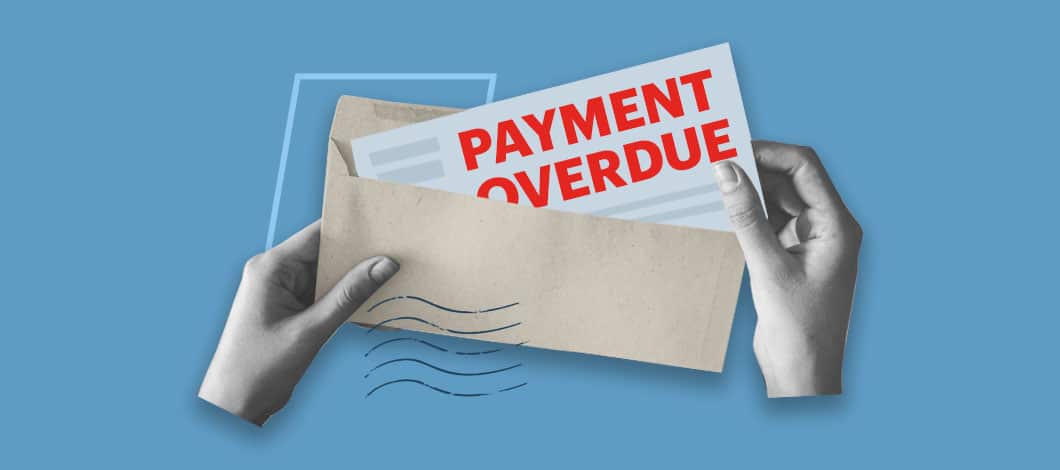Unpaid invoices are part of doing business for any company which extends credit to customers.
Learn how to manage them so you stay profitable. Here we’ll share a 10-step strategy for managing overdue invoices. First, we’ll cover what unpaid invoices are and why some customers fail to pay. Then we’ll walk through steps you can take to get customers to pay on time as well as what to do when a client doesn’t pay.
What Is an Unpaid Invoice?
An unpaid invoice is a bill that has been sent to a customer which the client hasn’t paid yet. Once an invoice is sent, it is classified as an outstanding invoice, meaning that money is owed and not yet paid. Some outstanding invoices aren’t overdue yet, while others are overdue.
Once an outstanding invoice passes its payment date, it enters into the overdue category. Overdue invoices fall into several categories. Some may fall within a grace period where the customer doesn’t yet owe a late fee. Some may have passed a date where a late fee is owed. Beyond this point, bills can be classified based on how late they are.
According to credit score provider myFICO, creditors typically divide late payments into the following groupings:
- 30 days late
- 60 days late
- 90 days late
- 120 days late
- 150 days late
- Charge off, where the payment is considered a loss because of severe delinquency
The later a bill gets, the worse it reflects on the debtor’s credit score. After 30 days, creditors often report nonpayment to credit reporting providers and turn invoices over to collection agencies. The older a debt gets, the more difficult it becomes to collect. Collection agencies base their fees partly on the age of an invoice, charging more to collect on older debts.

Why Do Some Customers Fail to Pay Invoices?
When a client has not paid invoice debt on time, there may be several reasons:
- The customer forgot the bill was due
- The customer’s credit card expired and they haven’t updated their information
- The client doesn’t have the money right now
- The customer disputes the charge
- The client refuses to pay
It’s important to be aware of the different possible motives for nonpayment so you can adjust your collection strategies accordingly. A customer who forgot their bill was due requires a different approach than a situation where a customer won’t pay for services.
You will have more success collecting outstanding payments from customers and clients if you have multiple strategies designed to address different reasons for nonpayment.
How to Get Overdue Invoices Paid: 10 Steps
To cover all the possible reasons customers might not pay on time, here’s how to pursue unpaid invoices using a 10-step approach:
- Spell out your payment terms in writing
- Automate your invoicing process
- Send payment reminders
- Allow a grace period
- Set late payment fees
- Send overdue notices
- Call the client
- Negotiate payment arrangements
- Send a demand of payment notice
- Initiate collection action
Avoiding late payments is easier than collecting unpaid bills, so these steps start with preemptive tactics designed to encourage customers to pay on time. The later steps cover what to do as invoices become increasingly late.
Let’s break down each step in more detail.
1. Spell Out Your Payment Terms in Writing
The foundation for an effective invoice collection strategy is a written statement of your payment policy. This serves a number of important functions, including:
- Establishing your standard operating procedures
- Informing your customers of your policy
- Serving as a reminder to customers if a payment issue arises
- Providing documentation if you need to pursue collection action
Post your payment policy on your website, and include it in your invoices and other relevant communications with customers.
2. Automate Your Invoicing Process
An efficient way to avoid late payments is to allow your customers to set up automated billing. There are a number of ways you can set up automatic billing. Some automated payment systems automatically bill customers using information stored on file, while others generate an invoice and accept payment from customers.
Some automated solutions are standalone apps. Others come built into invoicing or accounting apps. Note that most providers will charge you a fee per transaction.
3. Send Payment Reminders
A preemptive strategy for avoiding late payments is sending customers payment reminders. You can send reminders both before and after due dates. Sending reminders ahead of time reduces the likelihood of late payments. You can use email or text to send automated reminders. Automated reminders also may be sent at scheduled intervals after a payment becomes late.
4. Allow a Grace Period
A grace period gives customers a few extra days to pay before their invoice becomes late enough for late fees to kick in. This can motivate customers to pay before the grace period expires to avoid the late fee. It also provides you an opportunity to give customers a final friendly reminder before their account goes into late status.
If you choose to allow a grace period, spell it out in writing as part of your policy, and mention it on your invoices. Set up automated reminders to let customers know when their invoice has entered the grace period.
5. Set Late Payment Fees
Late fees provide an incentive for customers to pay on time to avoid an extra expense. Notifying customers of late fees also serves to remind them that their invoice is overdue.
Make late fee policies explicit in your payment policy statements. When late fees become due, send customers automated notifications.

6. Send Overdue Notices
Overdue notices form an important intermediary step between preemptive attempts to encourage on-time payment and reactive attempts to collect late payments. They give customers who may have forgotten their bill was due an additional opportunity to pay, while serving notice to customers who are avoiding payment.
Overdue notices can be scheduled to go out in an automated sequence at designated intervals. For example, you can send notices out 3 days, 7 days, 14 days, 21 days and 30 days after payment is due.
In some cases, customers may have already sent payment before your overdue notice arrives, so it’s good to acknowledge this possibility when sending reminders.
7. Call the Client
Some customers may respond to phone calls more readily than written notifications. You can set up procedures for when and how to call customers whose accounts are in late status. For example, you might have a policy of calling customers who haven’t paid within a certain number of days after their due date.
8. Negotiate Payment Arrangements
For customers who want to pay but are having difficulty coming up with funds on time, negotiating payment arrangements can help avoid further escalation. Some customers may be able to pay if you allow them to reschedule their payment for a later date or spread their payment out over installments. Others may be able to pay now if you allow them to use an alternative method of payment, such as a different credit card. When possible, try to collect at least a partial payment immediately.
9. Send a Demand of Payment Notice
If the steps above fail to induce payment, more direct measures to compel payment become necessary. A last resort before turning to collection action is to send a demand for payment notice. This is a letter to a client who refuses to pay informing them of their obligation to pay immediately and your intent to initiate collection action should payment not be forthcoming.
A demand notice lets the customer know there will be consequences for nonpayment, such as damage to their credit score and possible legal action costing them additional fees. This can motivate customers to pay to avoid collection action. An attorney can help you draft a demand notice or you can find templates online.
10. Initiate Collection Action
If a customer fails to respond to a demand for payment letter within a reasonable time, you may need to turn their account over to a collection agency. Collection agencies contact debtors to collect payment. They also may initiate legal action against debtors on your behalf.
Alternately, if you suspect a collection agency will have difficulty recovering your debt, you can sell your debt claim to a debt buyer, who will pay you a percentage of what you’re owed and attempt to collect from the customer on their own. Debt buyers typically pay less for older debts which are deemed more difficult to collect.
Manage Unpaid Invoices to Reduce Lost Revenue
Unpaid invoices are bills that have been sent but not yet paid, including bills that aren’t yet overdue as well as ones that are. Overdue invoices can be classified into groupings based on how late they are, with bills over 30 days past due often referred to collection action.
Customers may have a number of reasons for failing to pay on time, ranging from forgetfulness to refusal to pay. A good collection strategy should address the various reasons customers fail to pay by using tactics that correspond to different stages in the collection process.
Strategies for managing unpaid invoices range from preemptive tactics such as payment reminders and late fees to more responsive tactics such as demand of payment letters and debt collection. Using a full array of tactics for different stages in the collection process can help you reduce unpaid invoices and retain more revenue.










